
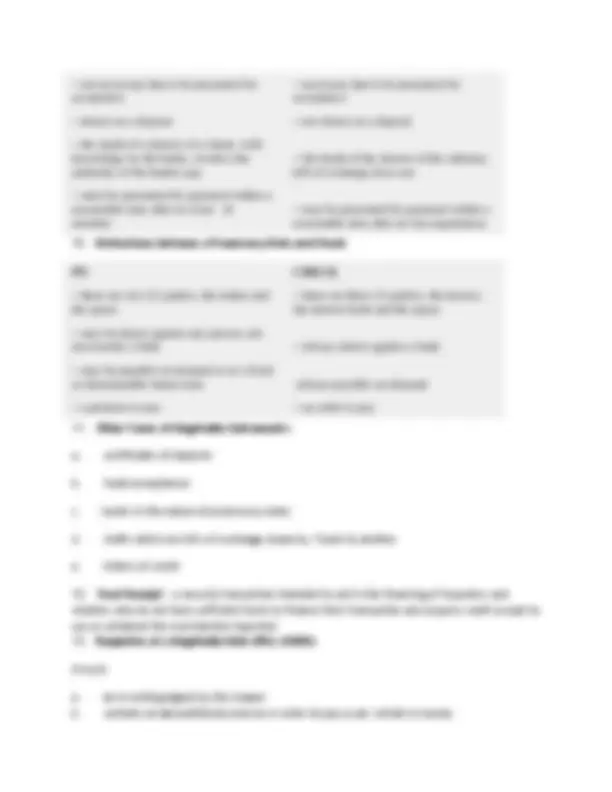
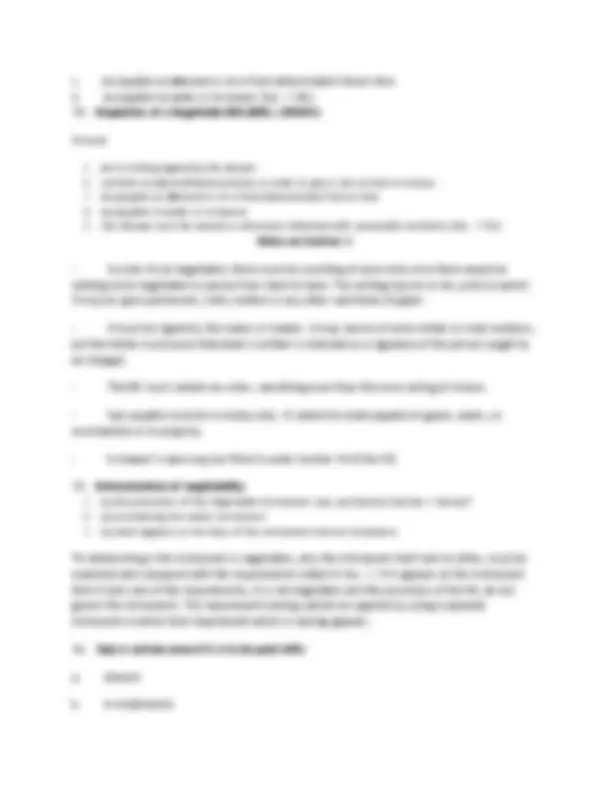
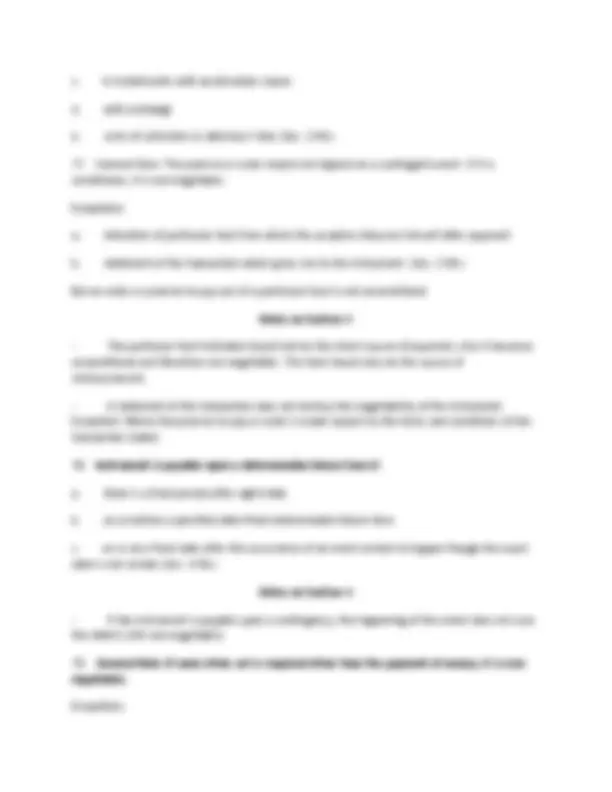
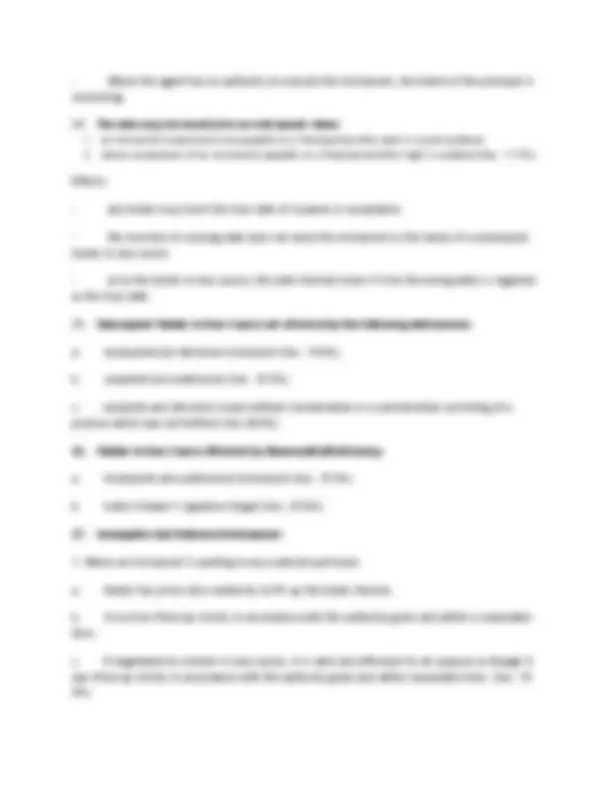
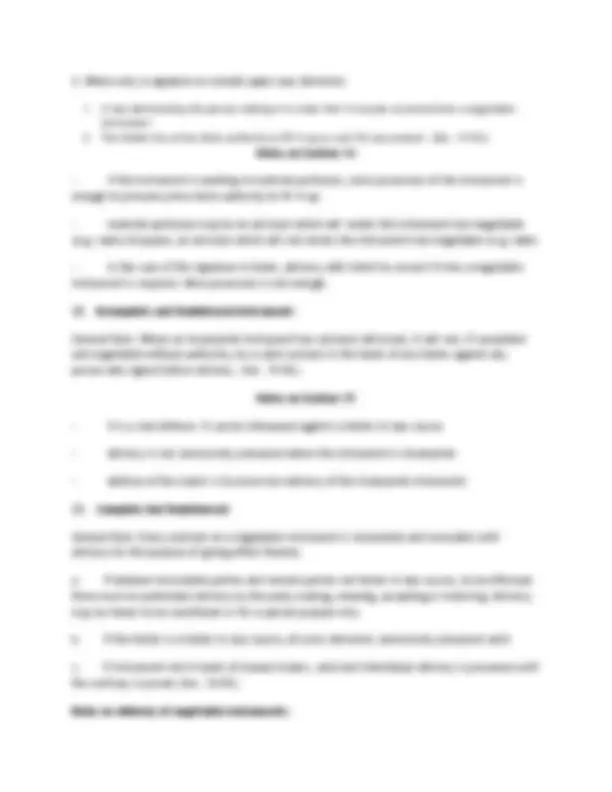
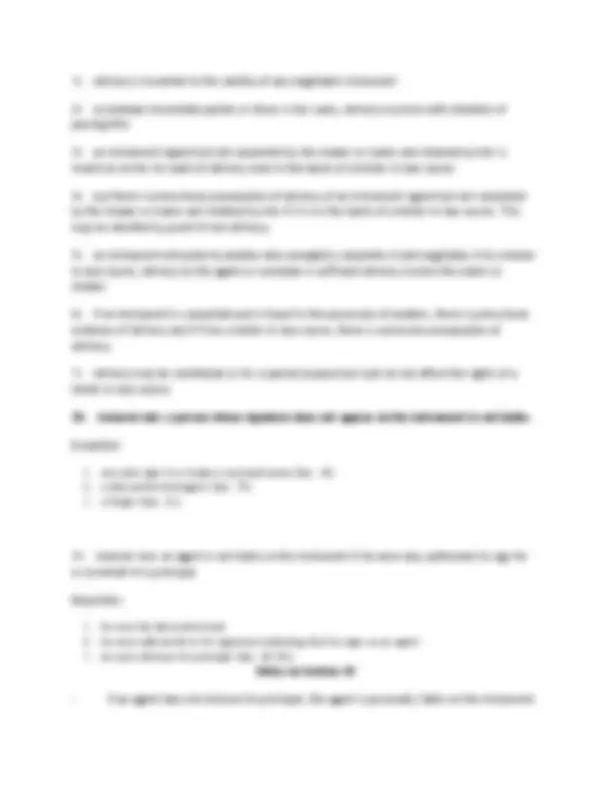
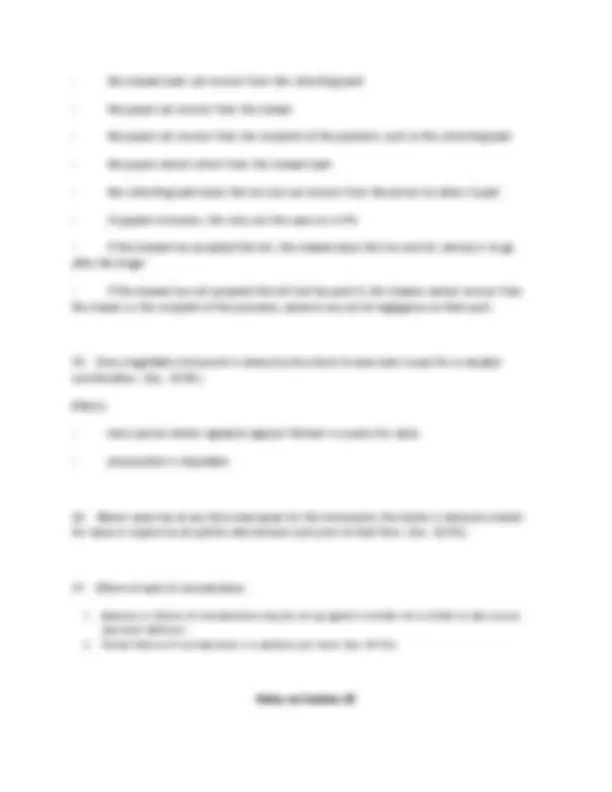
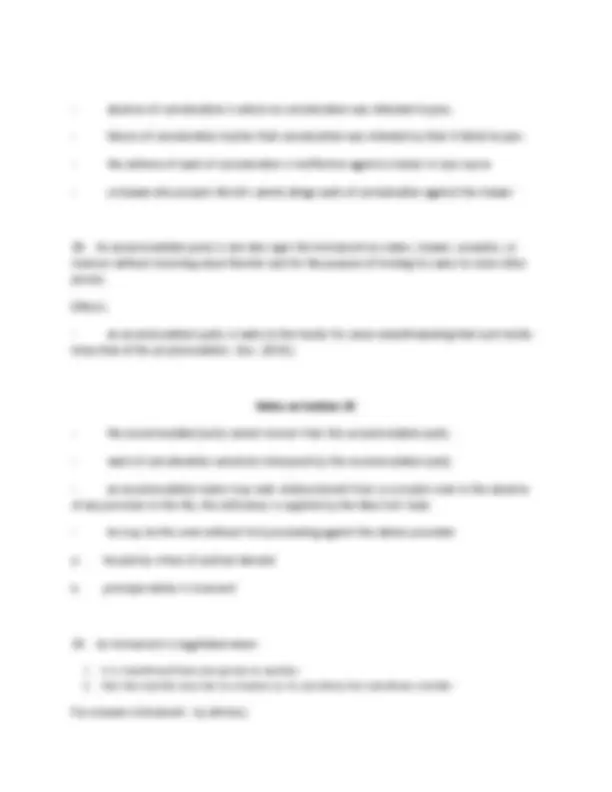
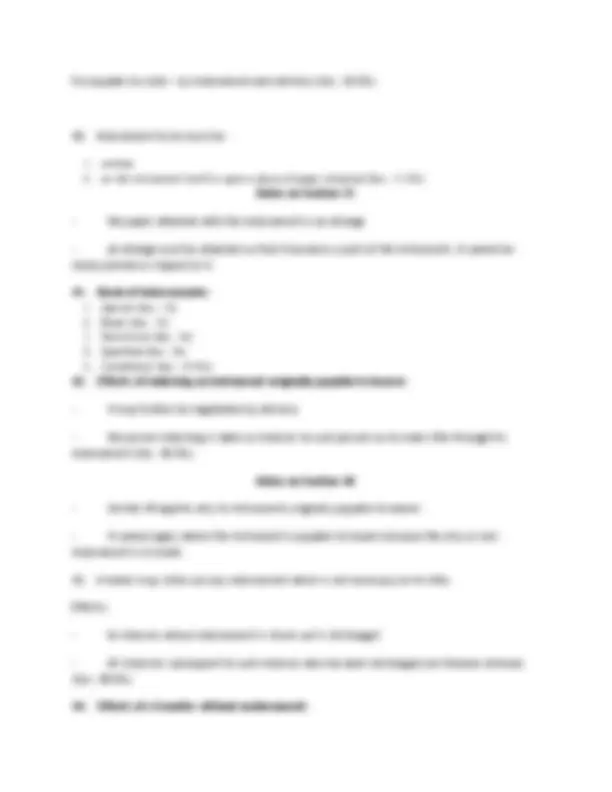
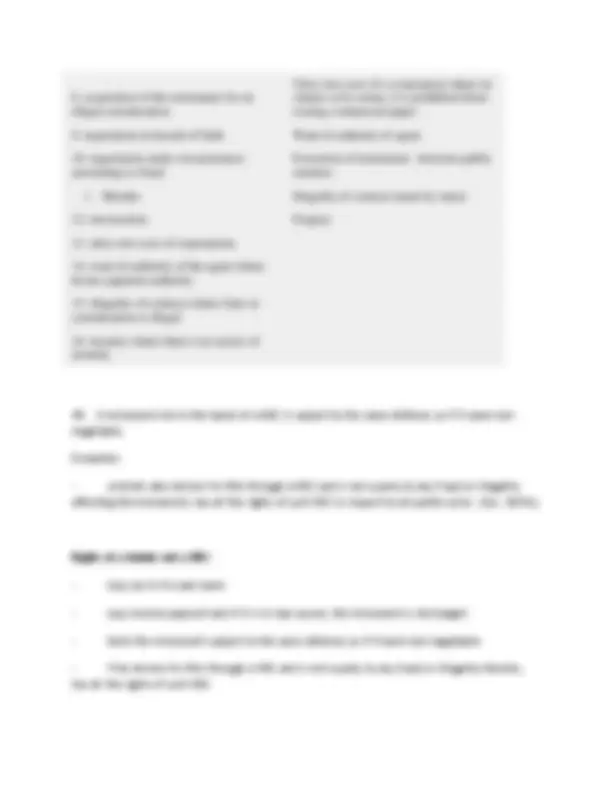
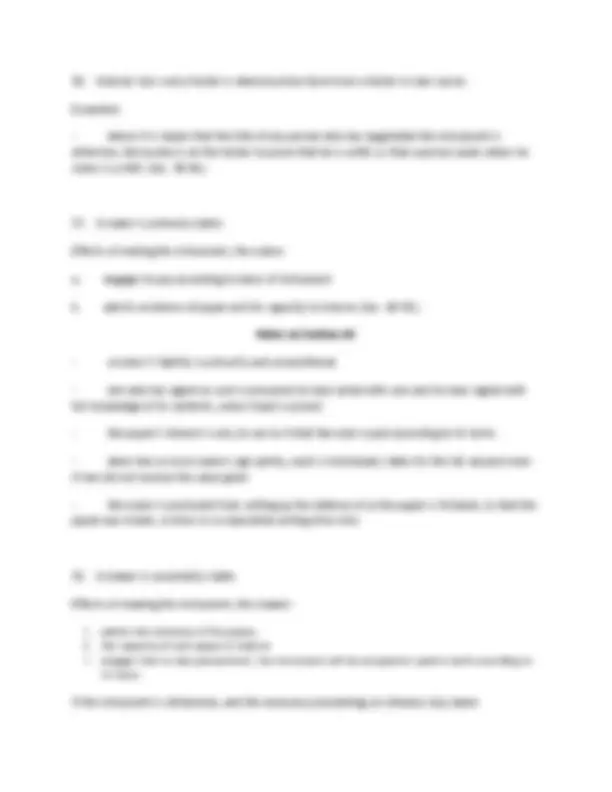
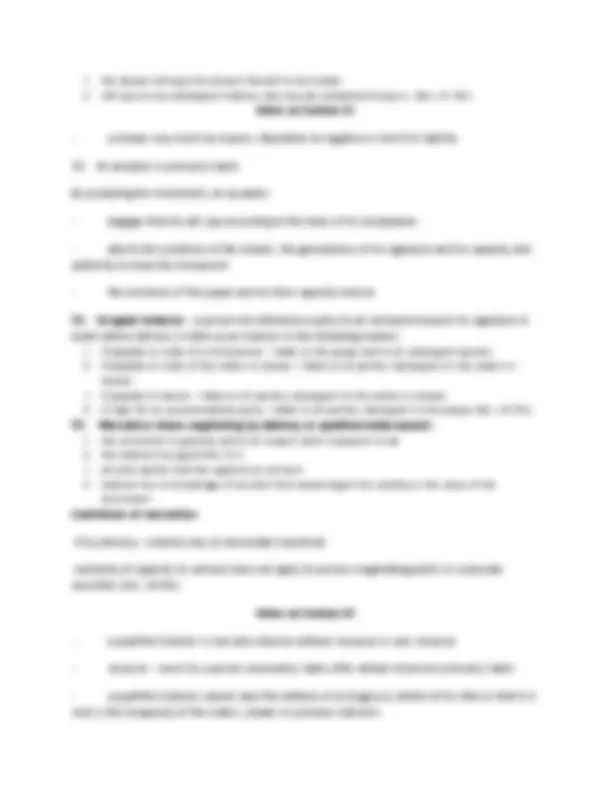
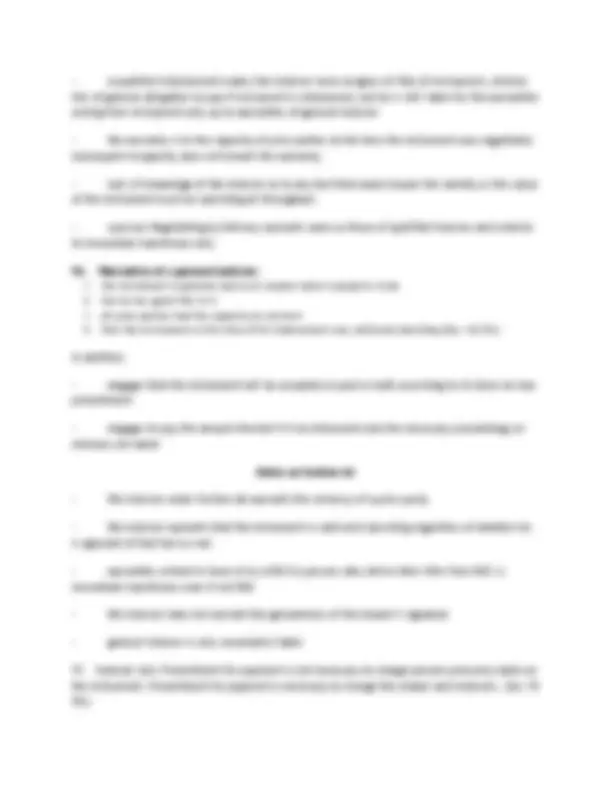
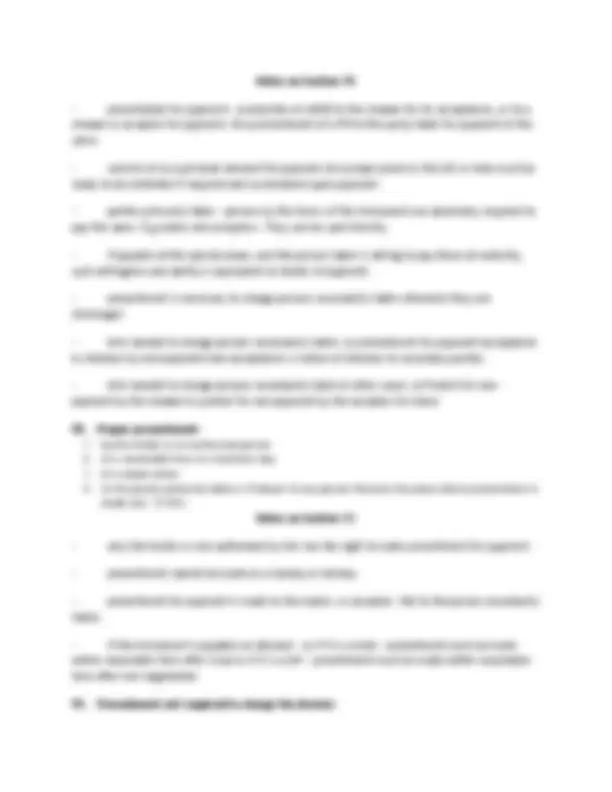
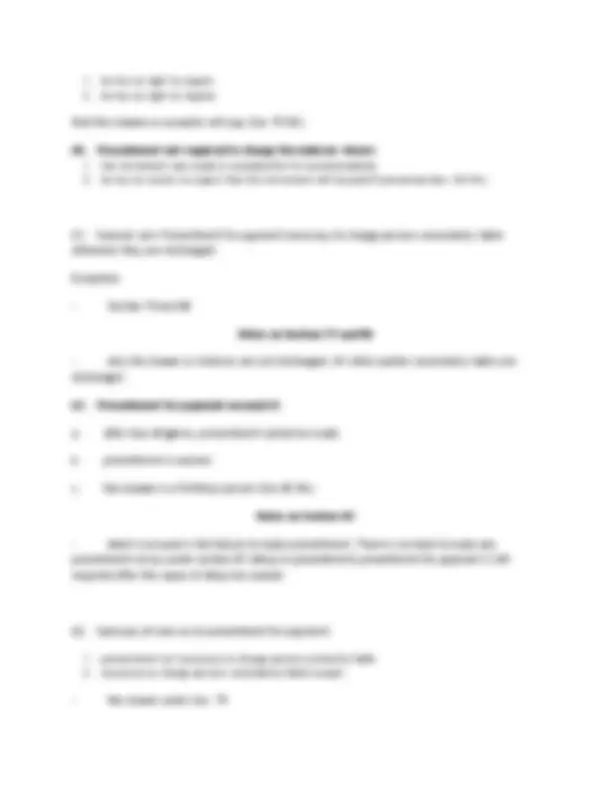
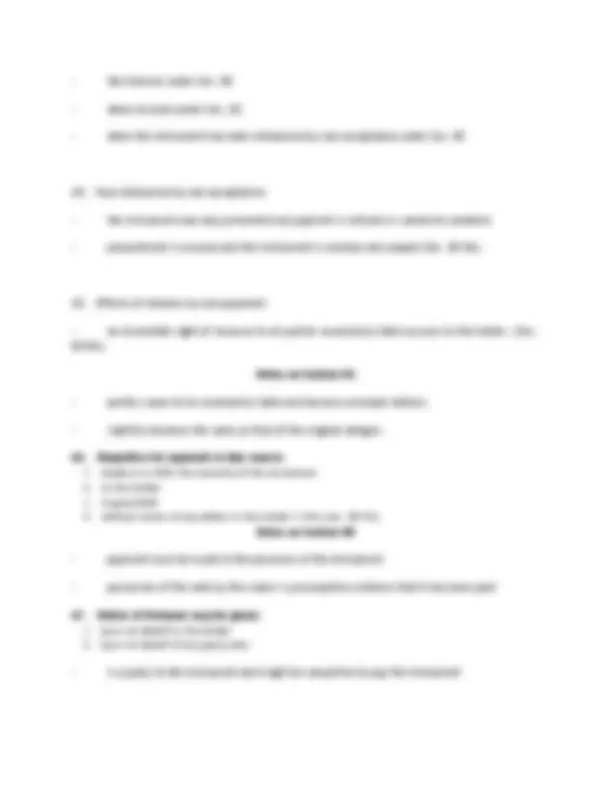
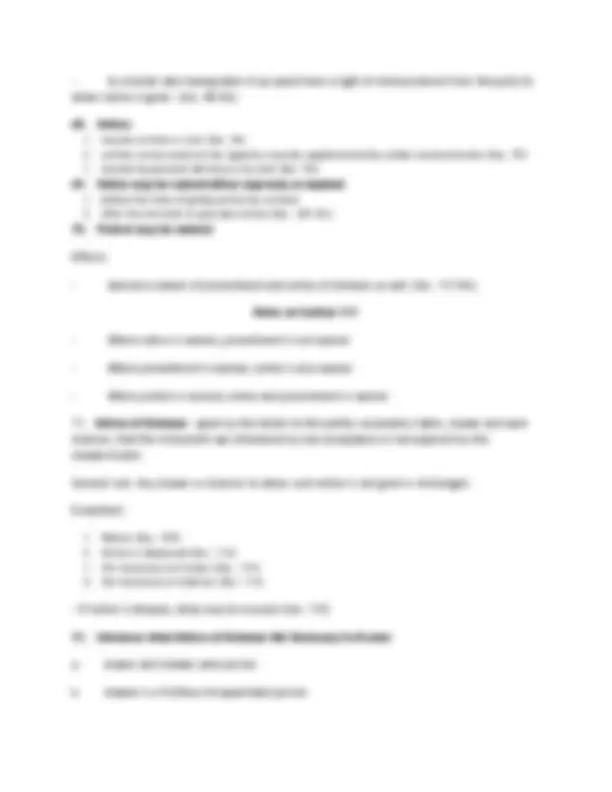
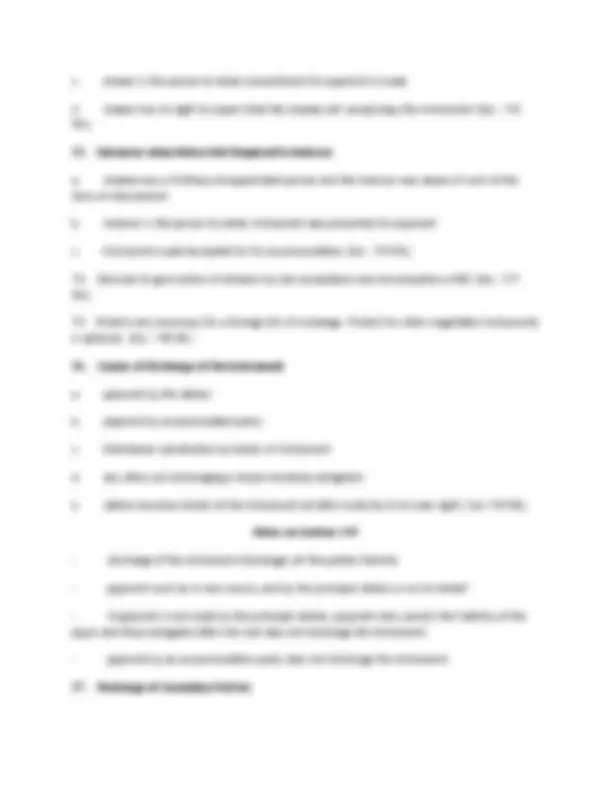
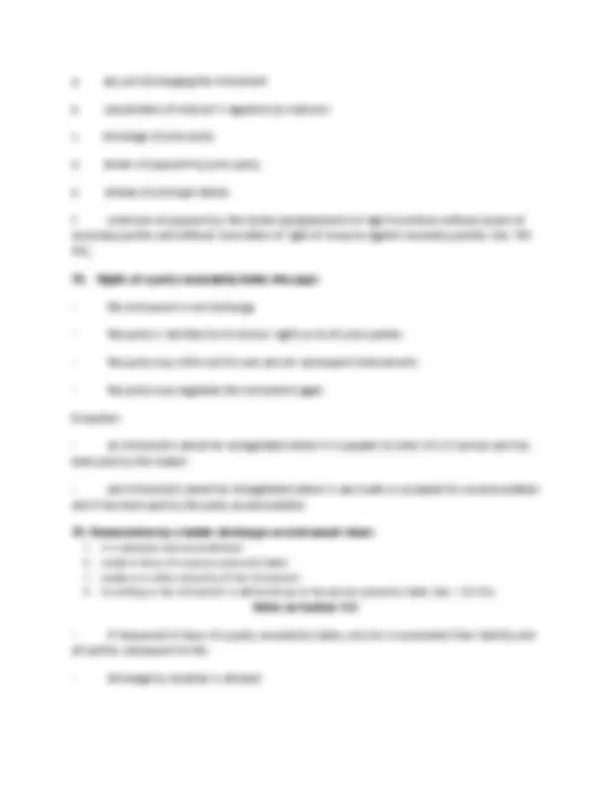
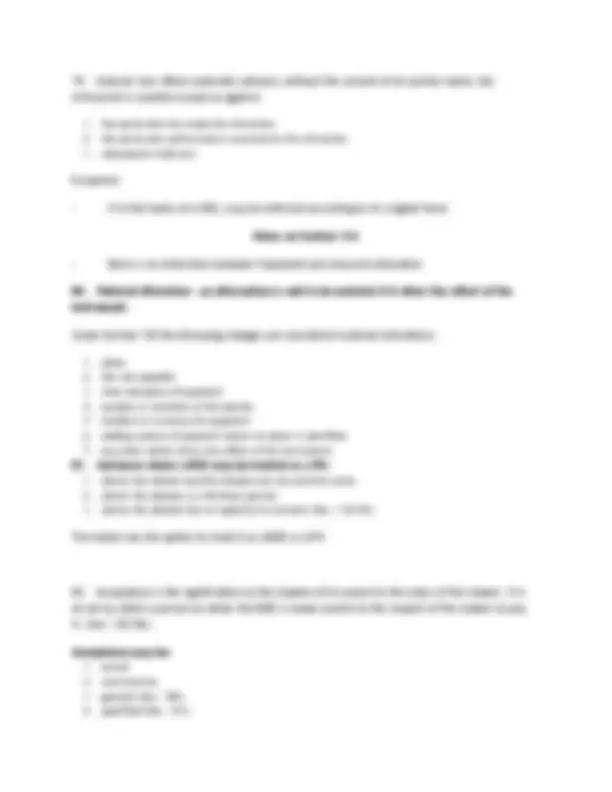
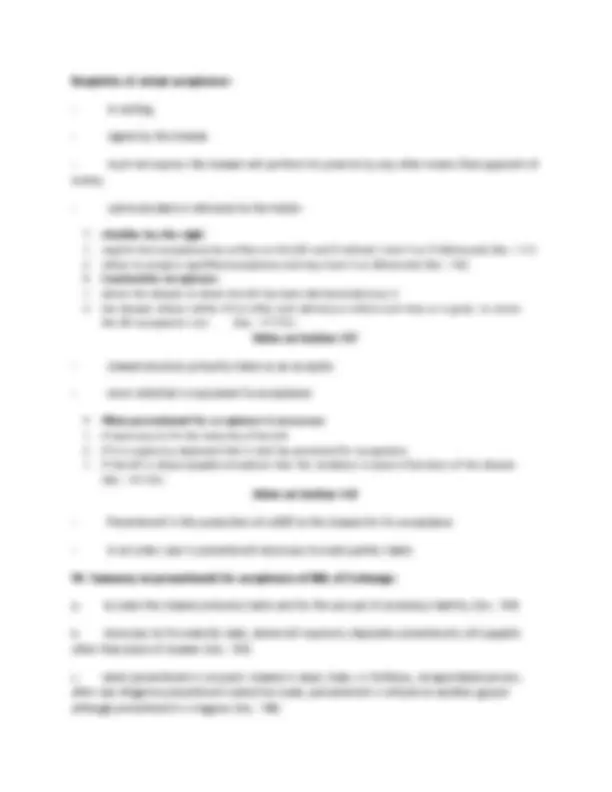
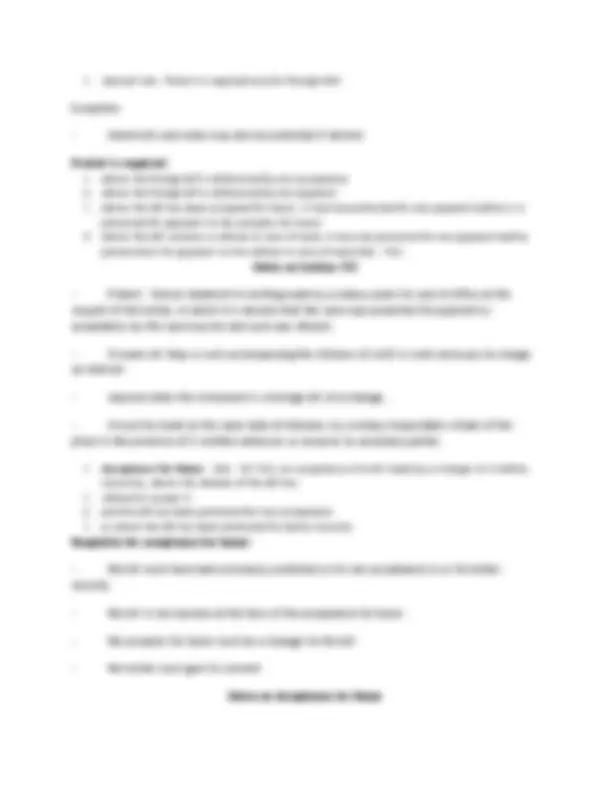
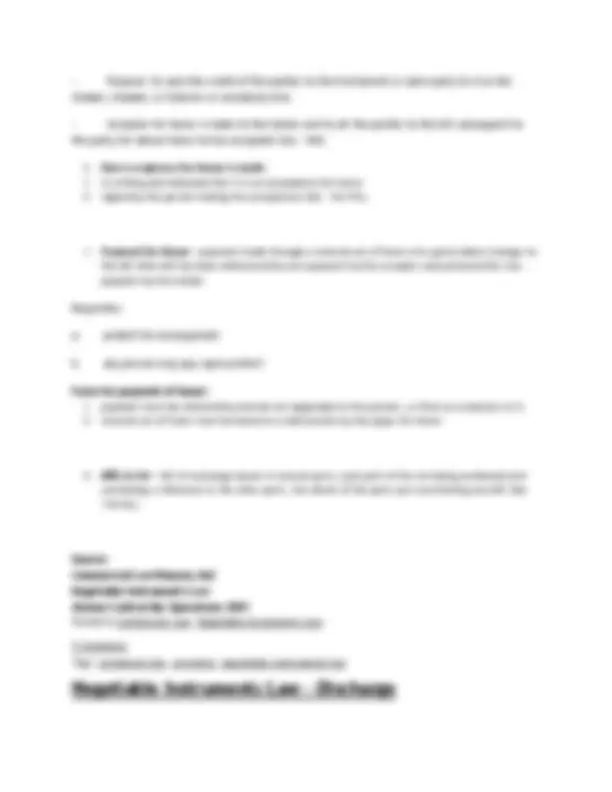
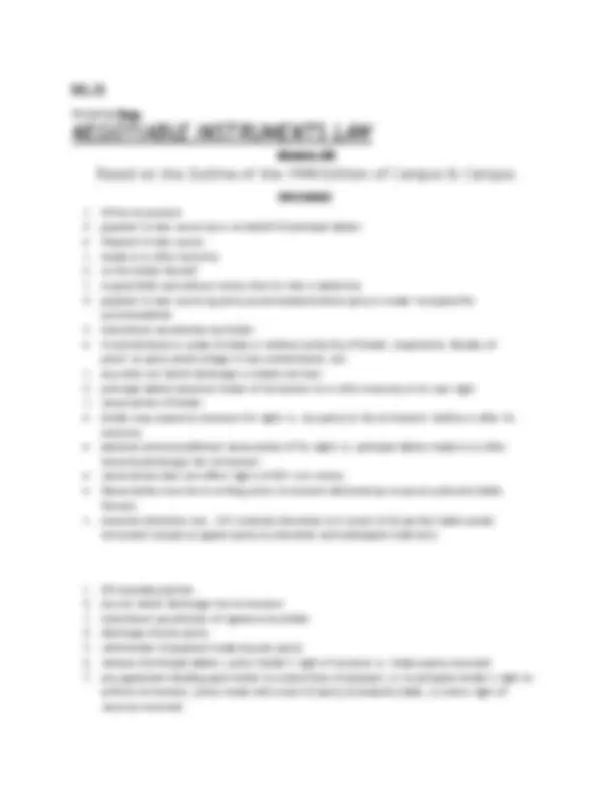
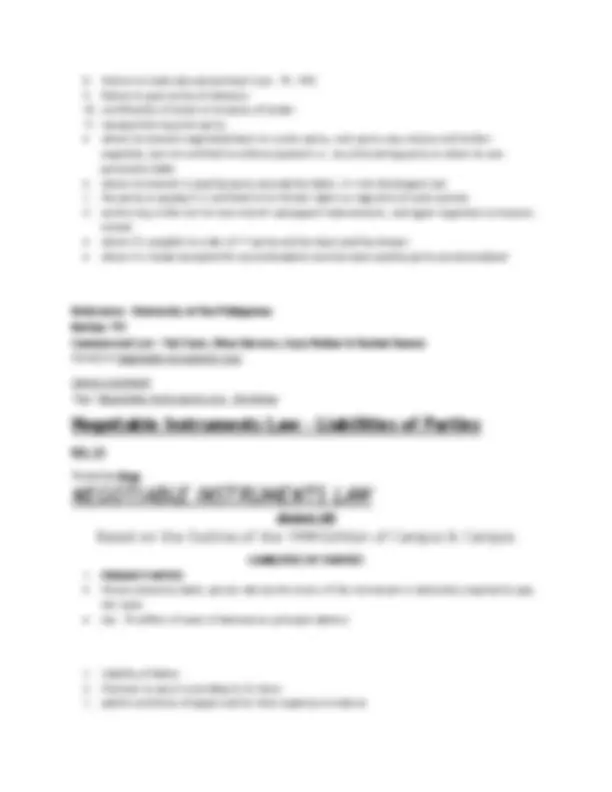
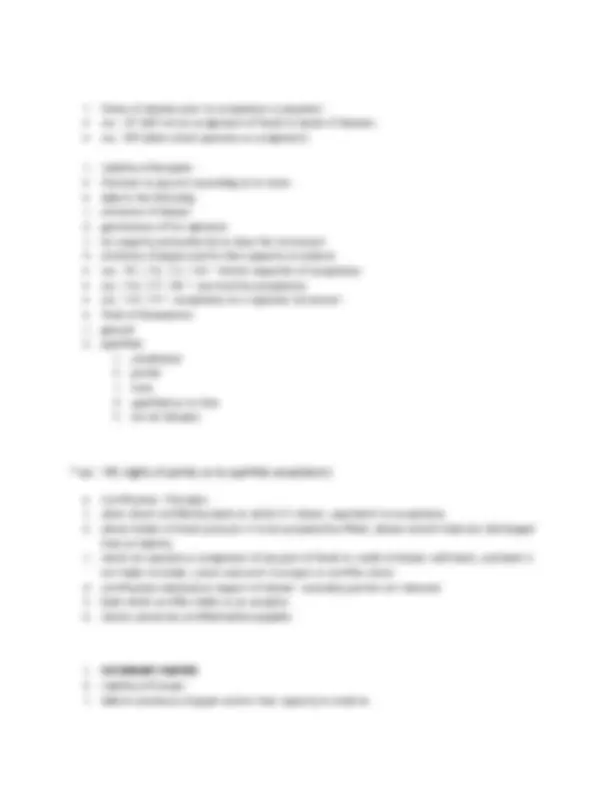
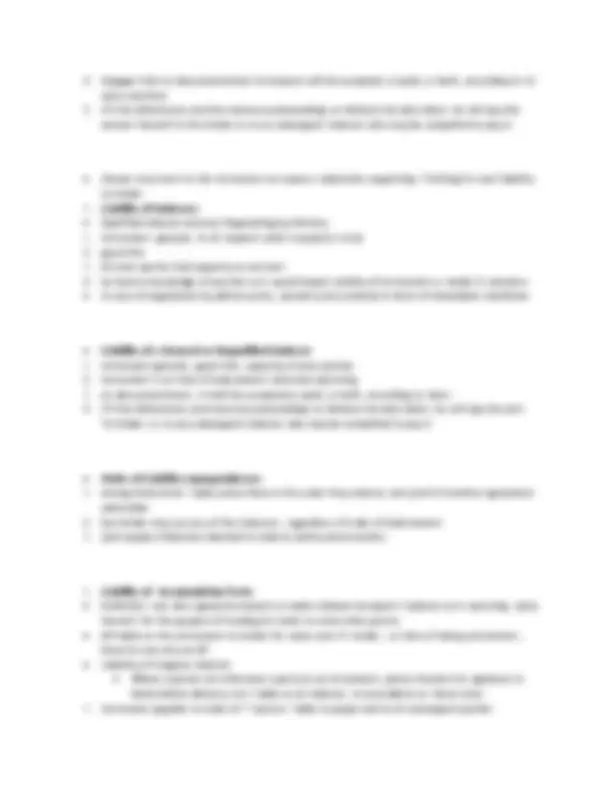
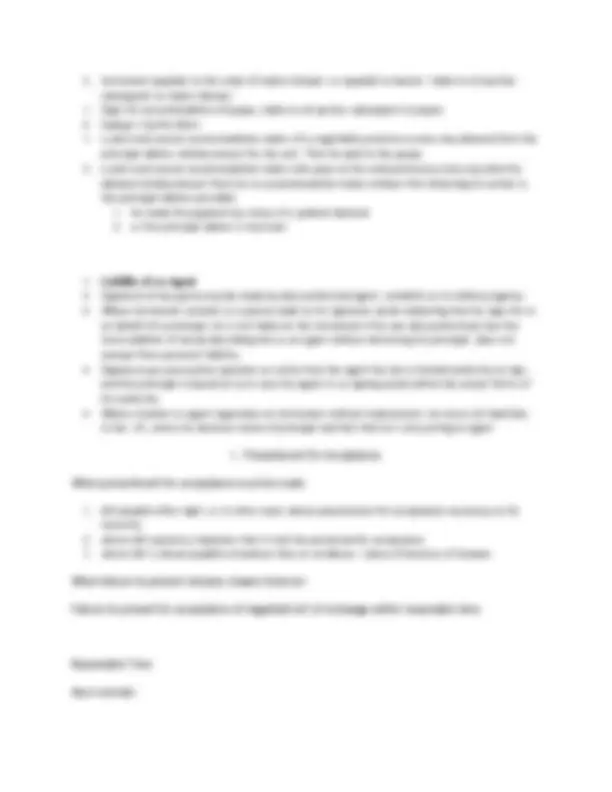
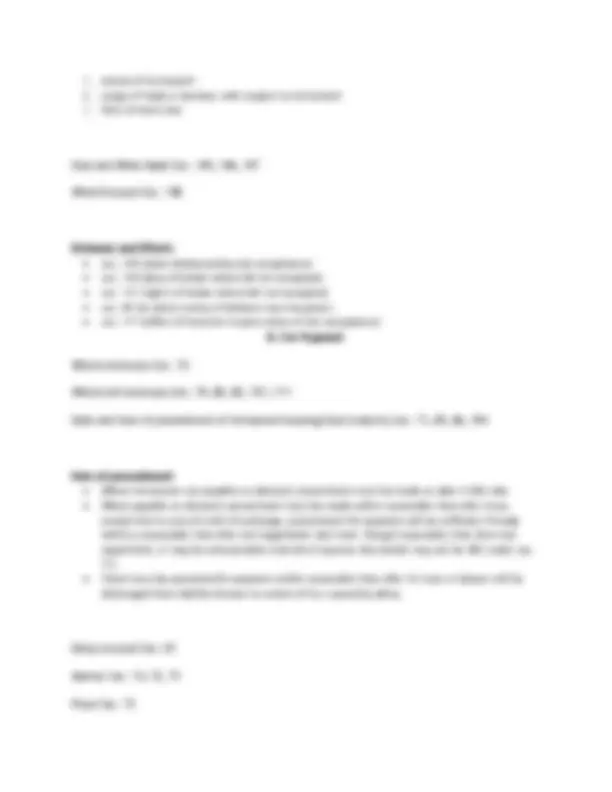
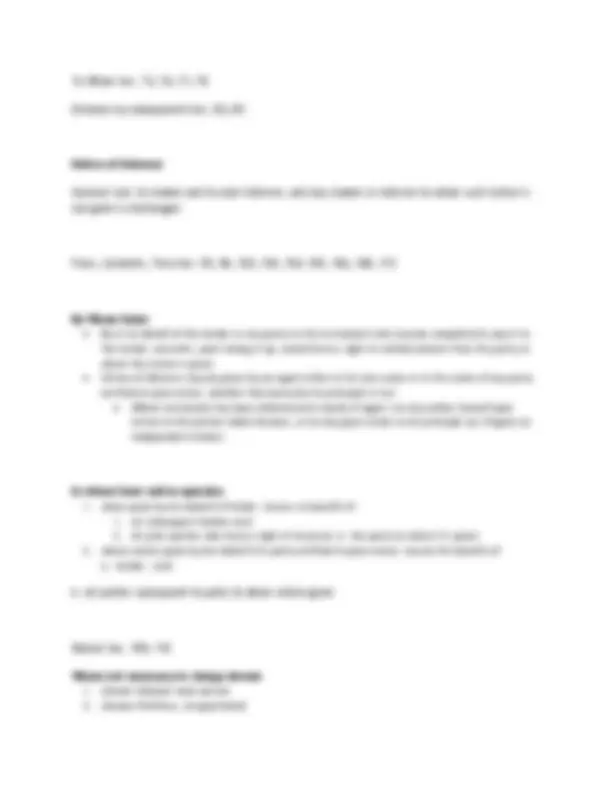
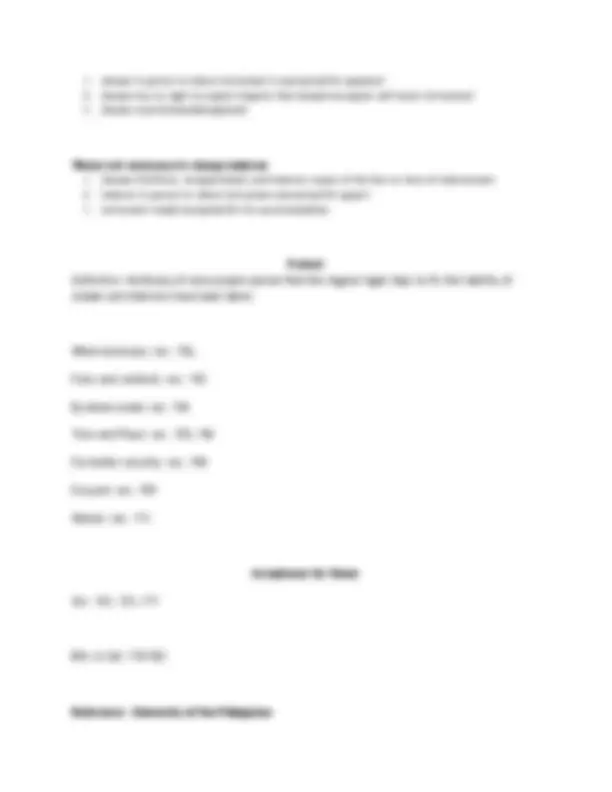
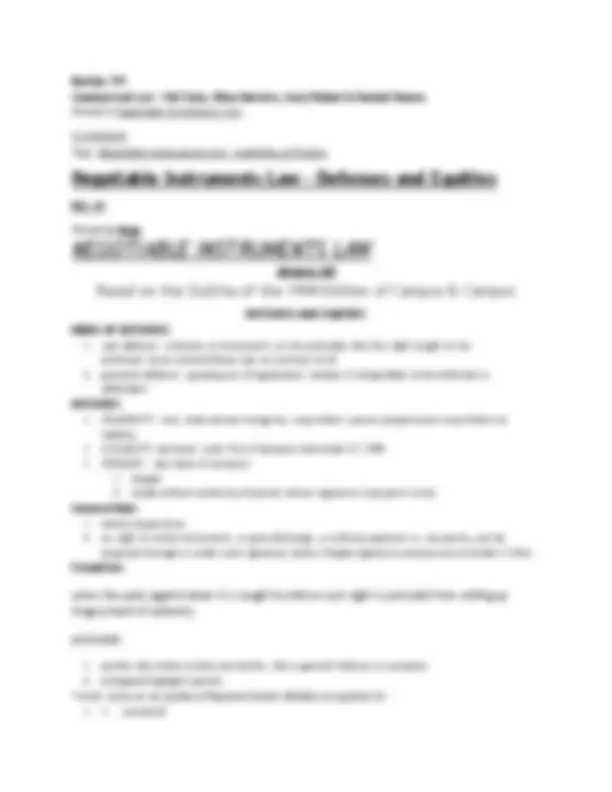
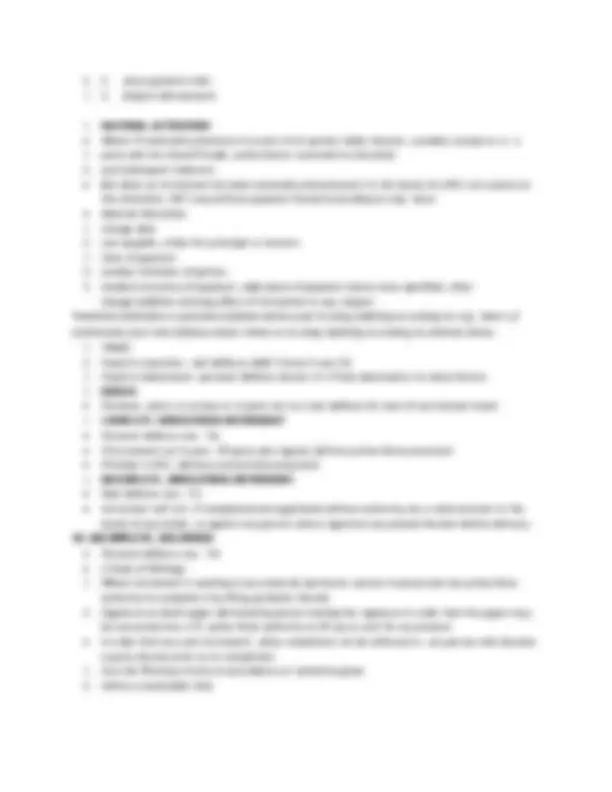
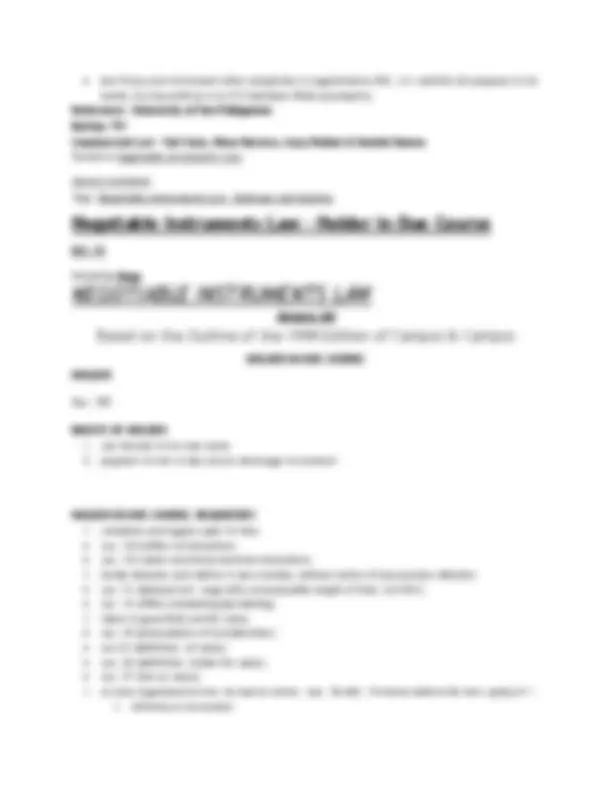
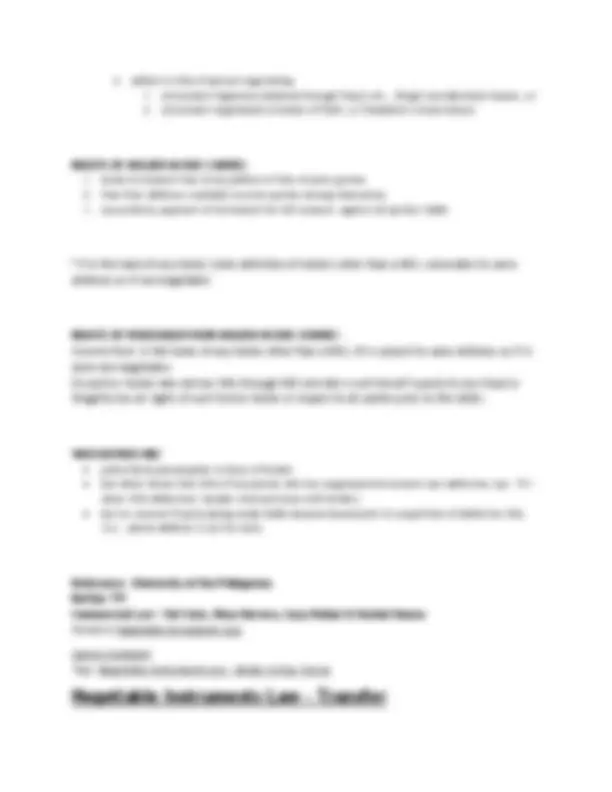
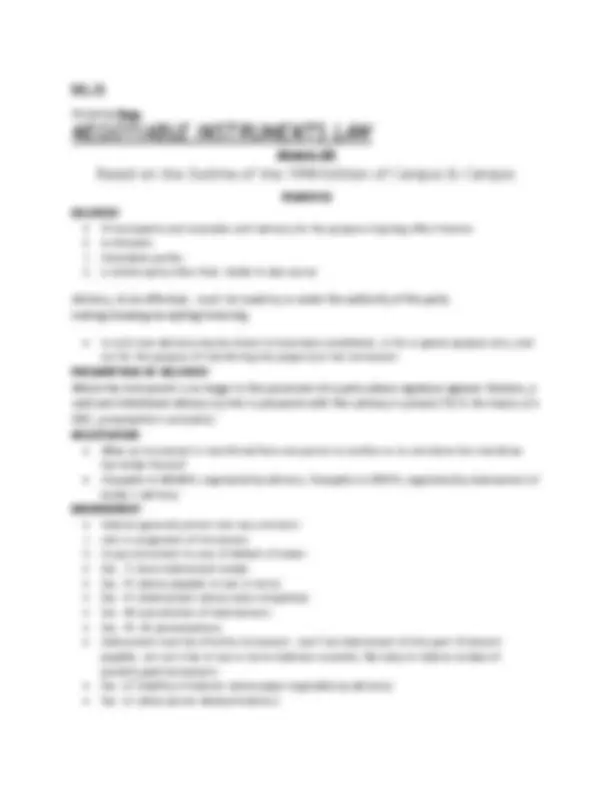
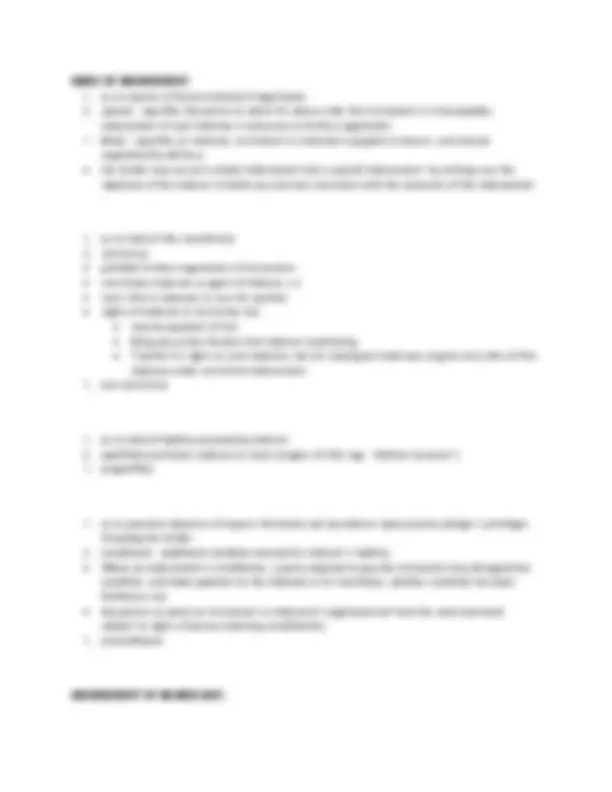
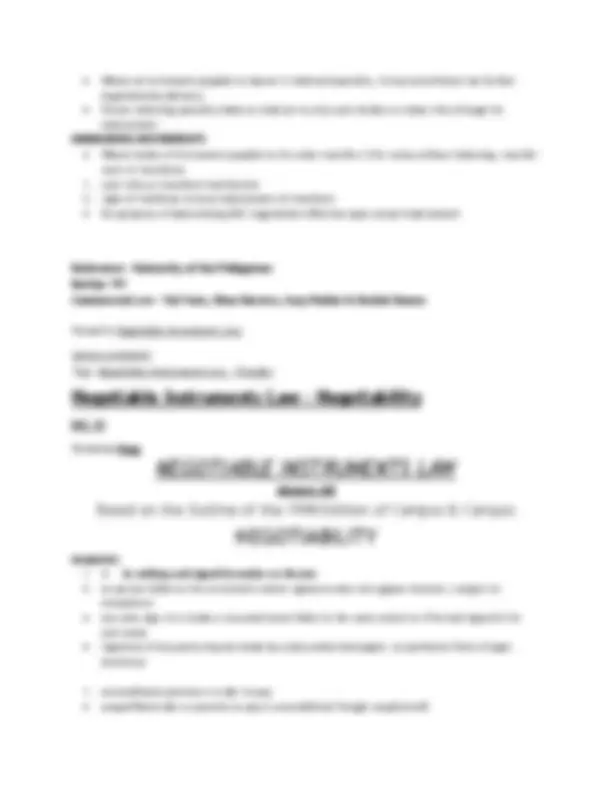

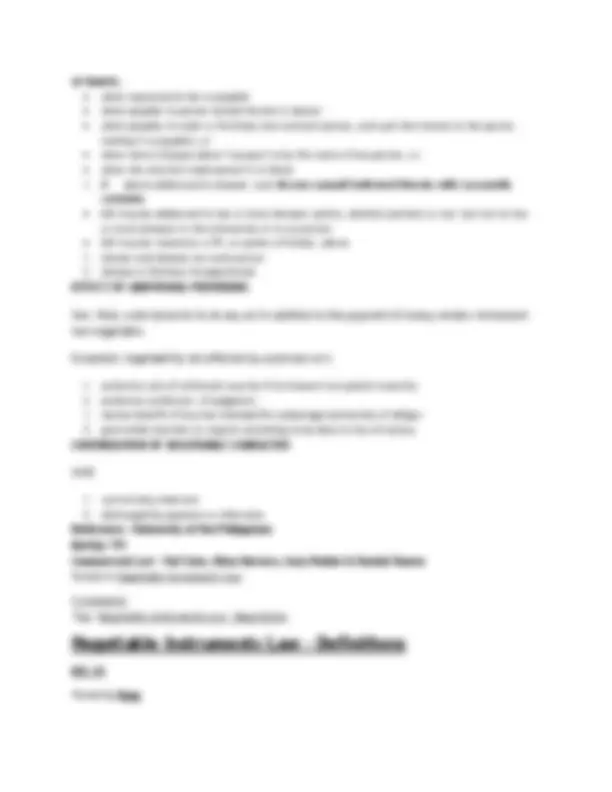
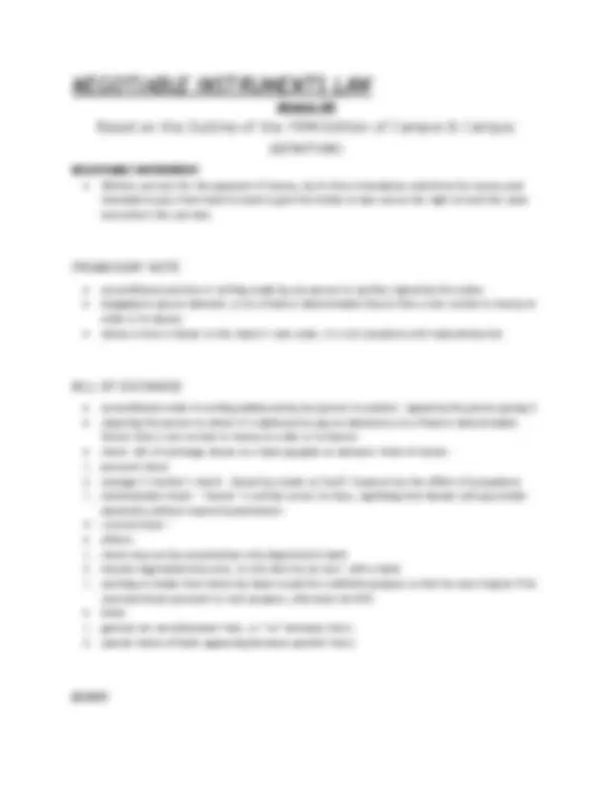



Study with the several resources on Docsity

Earn points by helping other students or get them with a premium plan


Prepare for your exams
Study with the several resources on Docsity

Earn points to download
Earn points by helping other students or get them with a premium plan
Community
Ask the community for help and clear up your study doubts
Discover the best universities in your country according to Docsity users
Free resources
Download our free guides on studying techniques, anxiety management strategies, and thesis advice from Docsity tutors
The characteristics and differences between negotiable and non-negotiable instruments, including the rules on delivery and discharge of secondary parties. It also covers the rights of holders in due course and the nature of indorsed instruments.
Typology: Lecture notes
1 / 50

This page cannot be seen from the preview
Don't miss anything!











































c. be payable on d emand or at a fixed determinable future time d. be payable to o rder or to bearer (Sec. 1 NIL)
c. in installments with acceleration clause d. with exchange e. costs of collection or attorney’s fees (Sec. 2 NIL)
30. General rule: a person whose signature does not appear on the instrument in not liable. Exception: 1. one who signs in a trade or assumed name (Sec. 18) 2. a duly authorized agent (Sec. 19) 3. a forger (Sec. 23)
32. Per Procuration – operates as notice that the agent has a limited authority to sign. Effects: